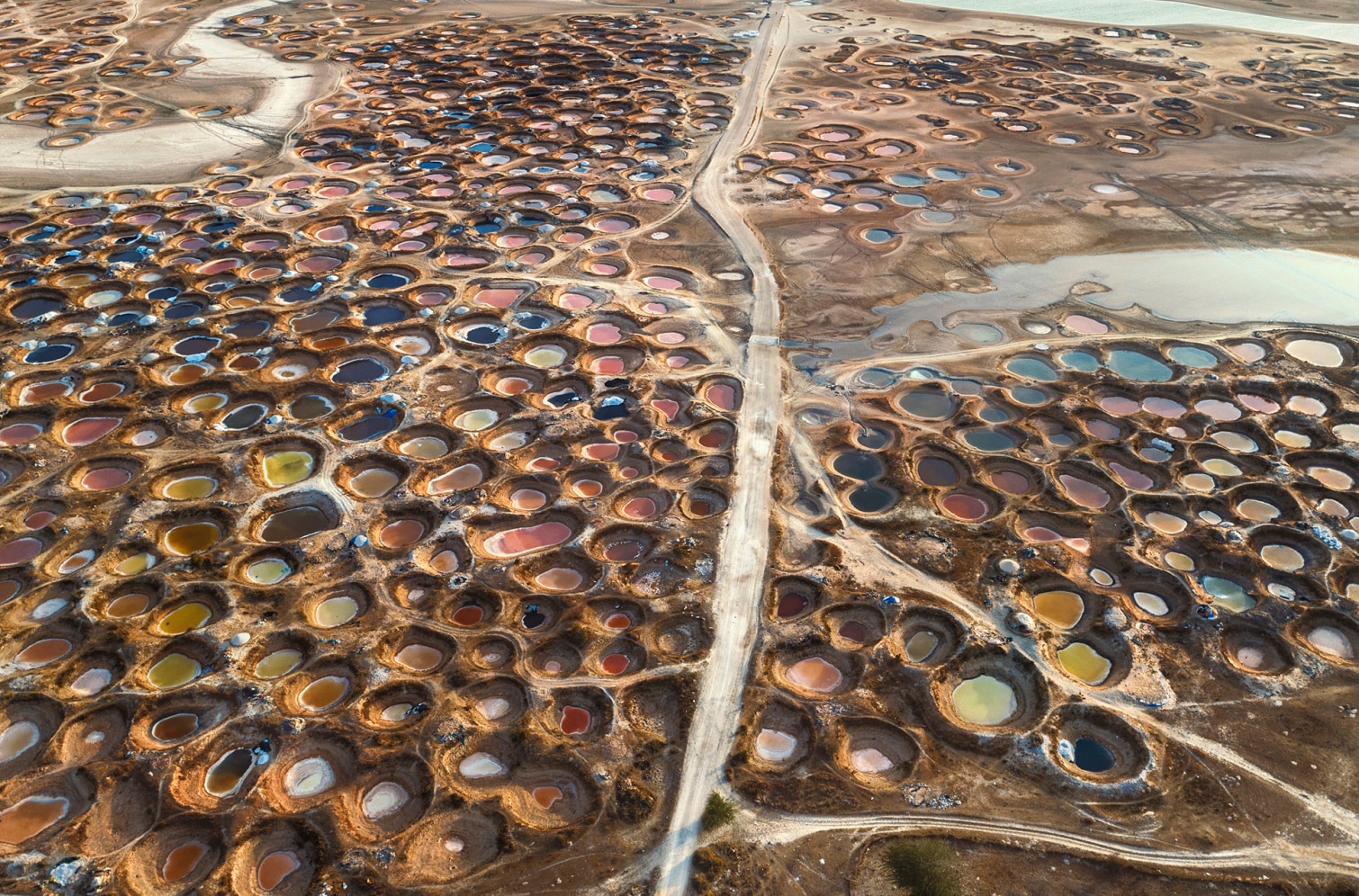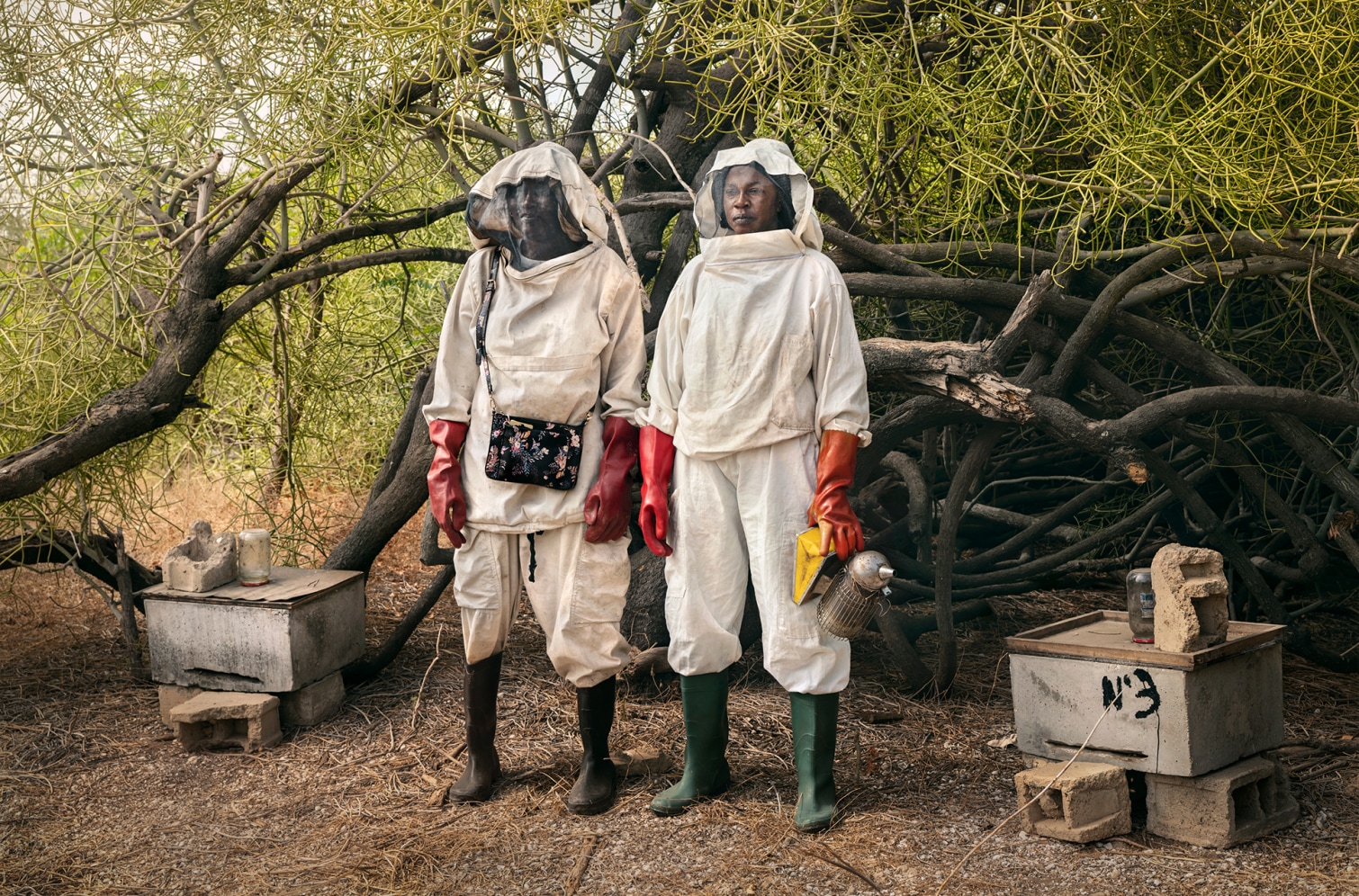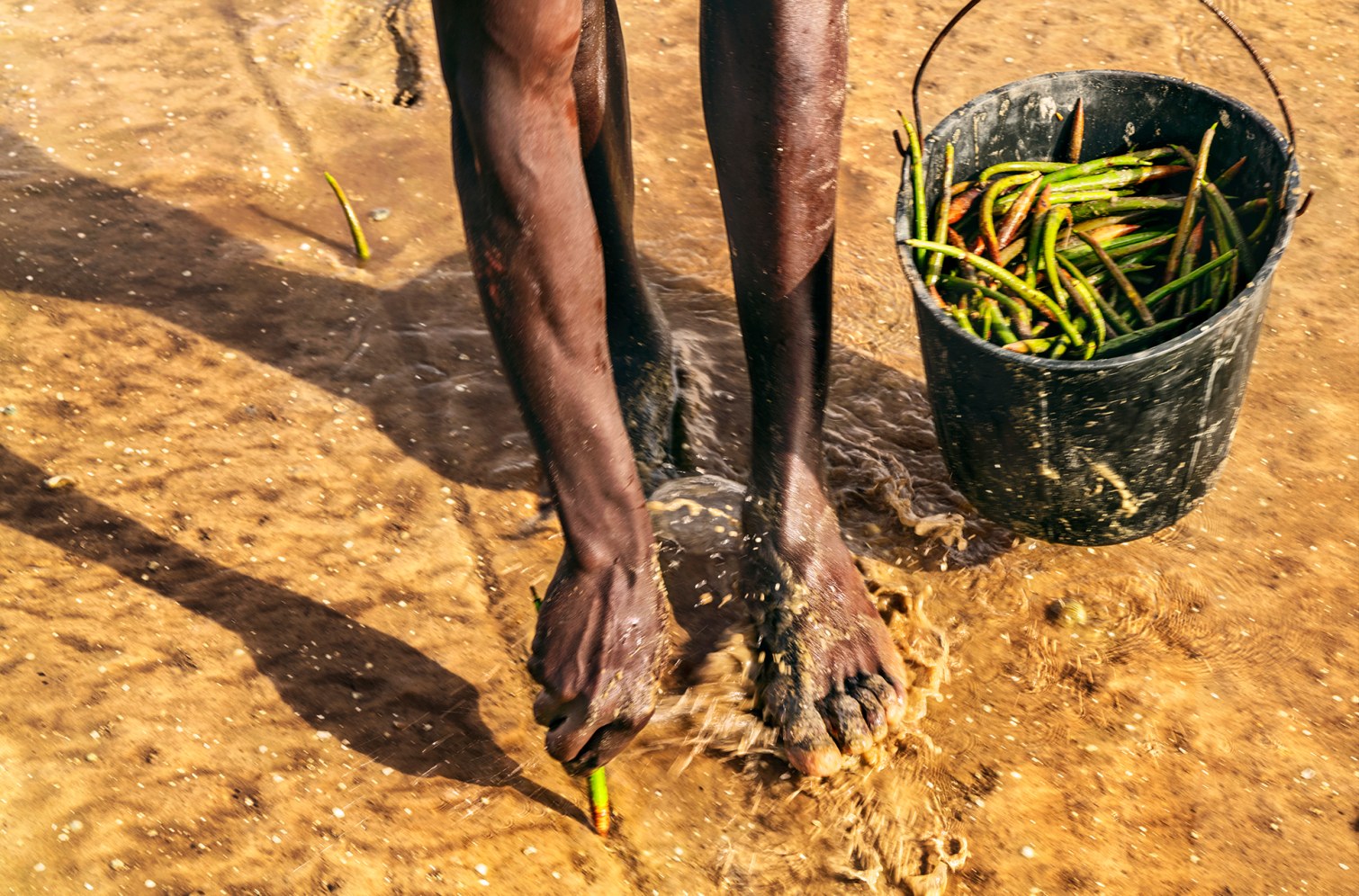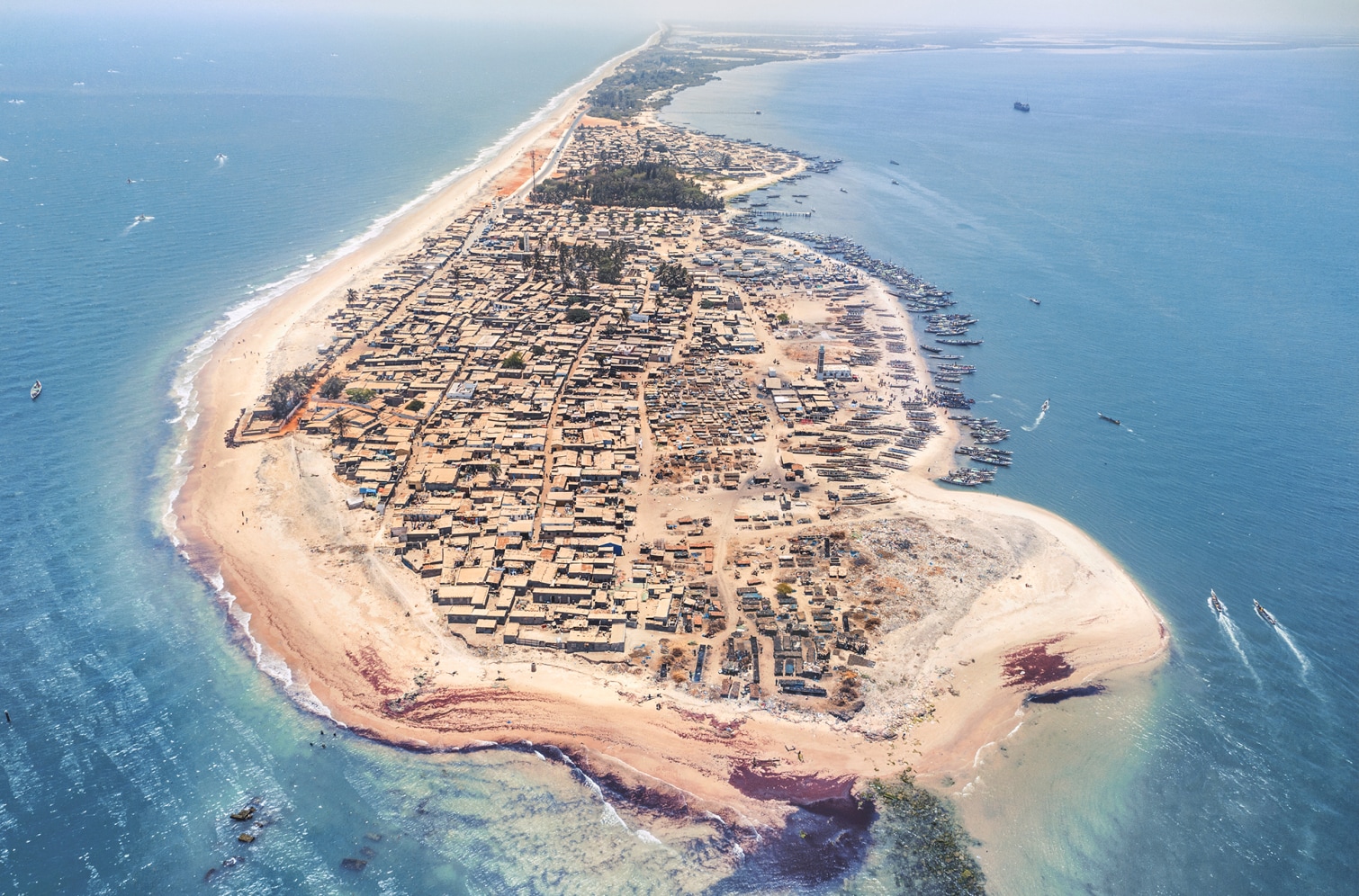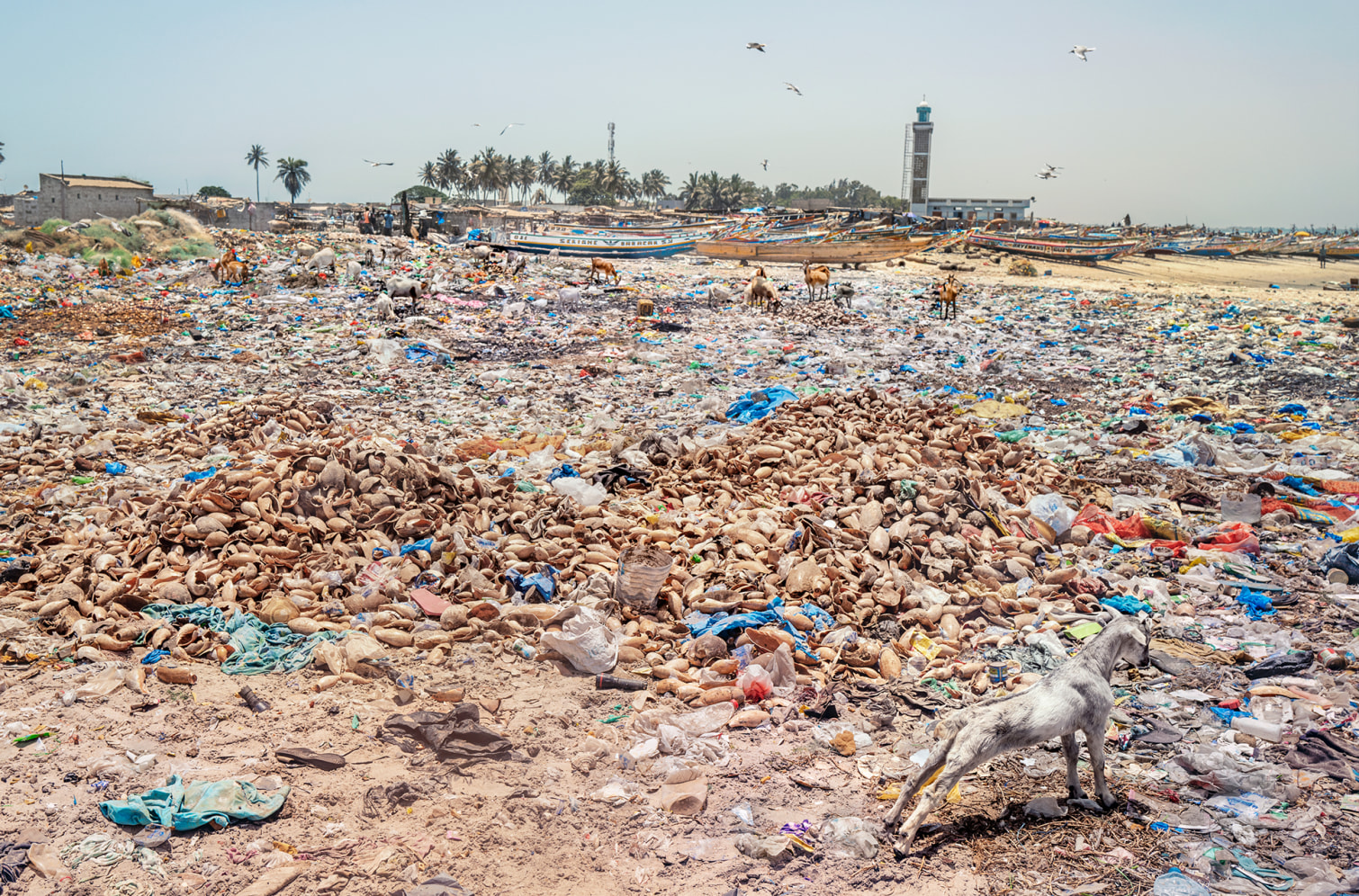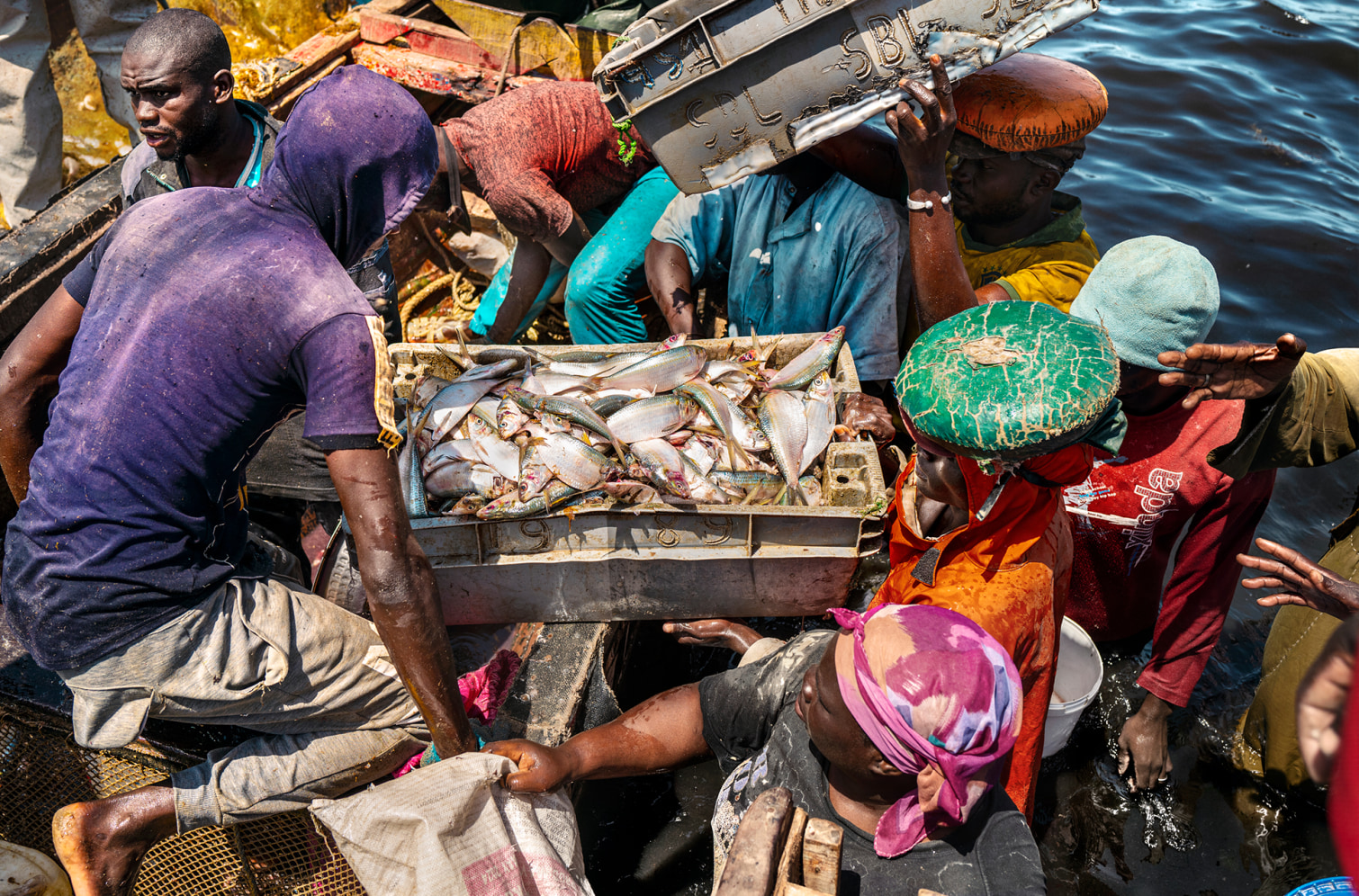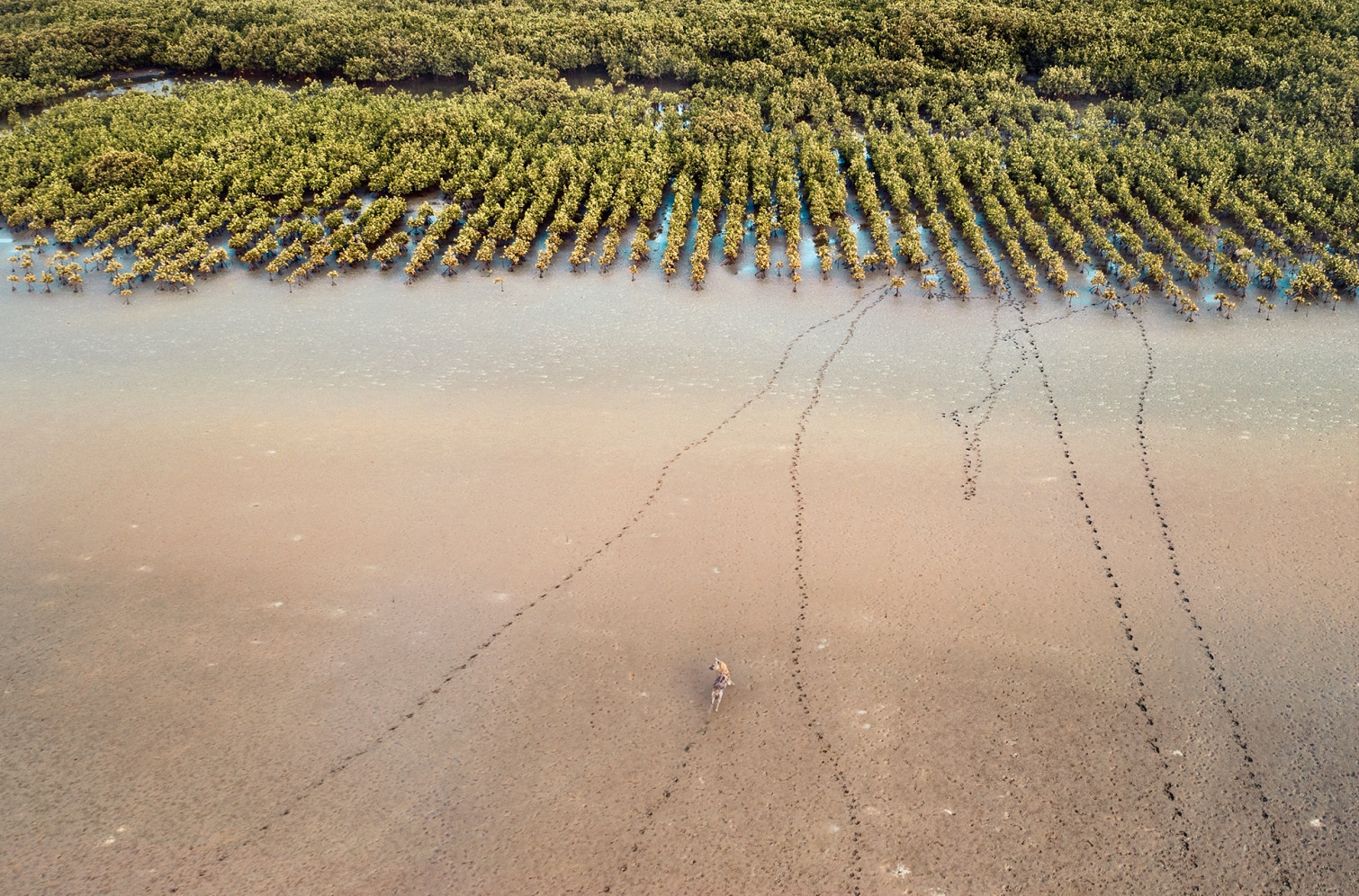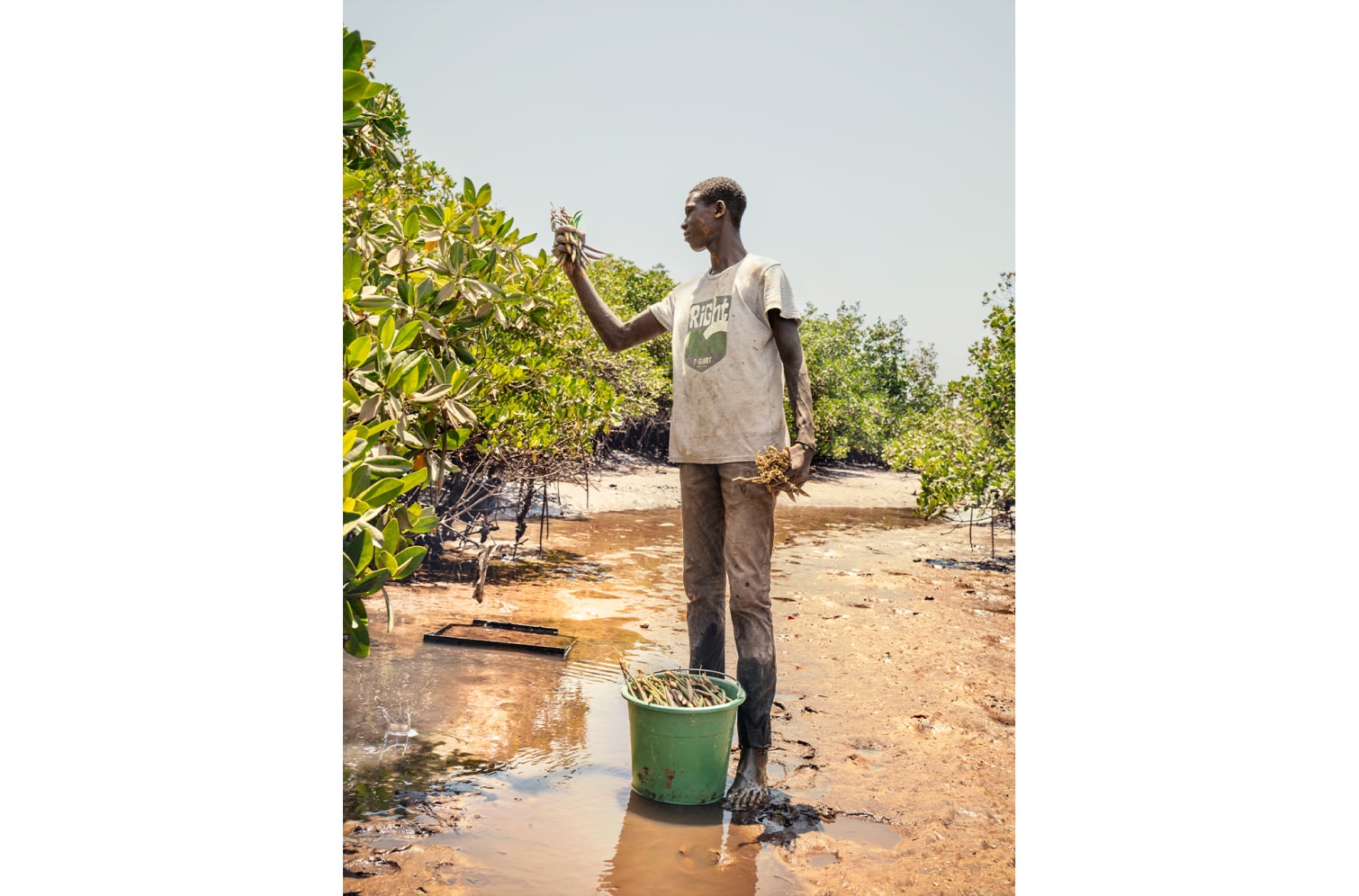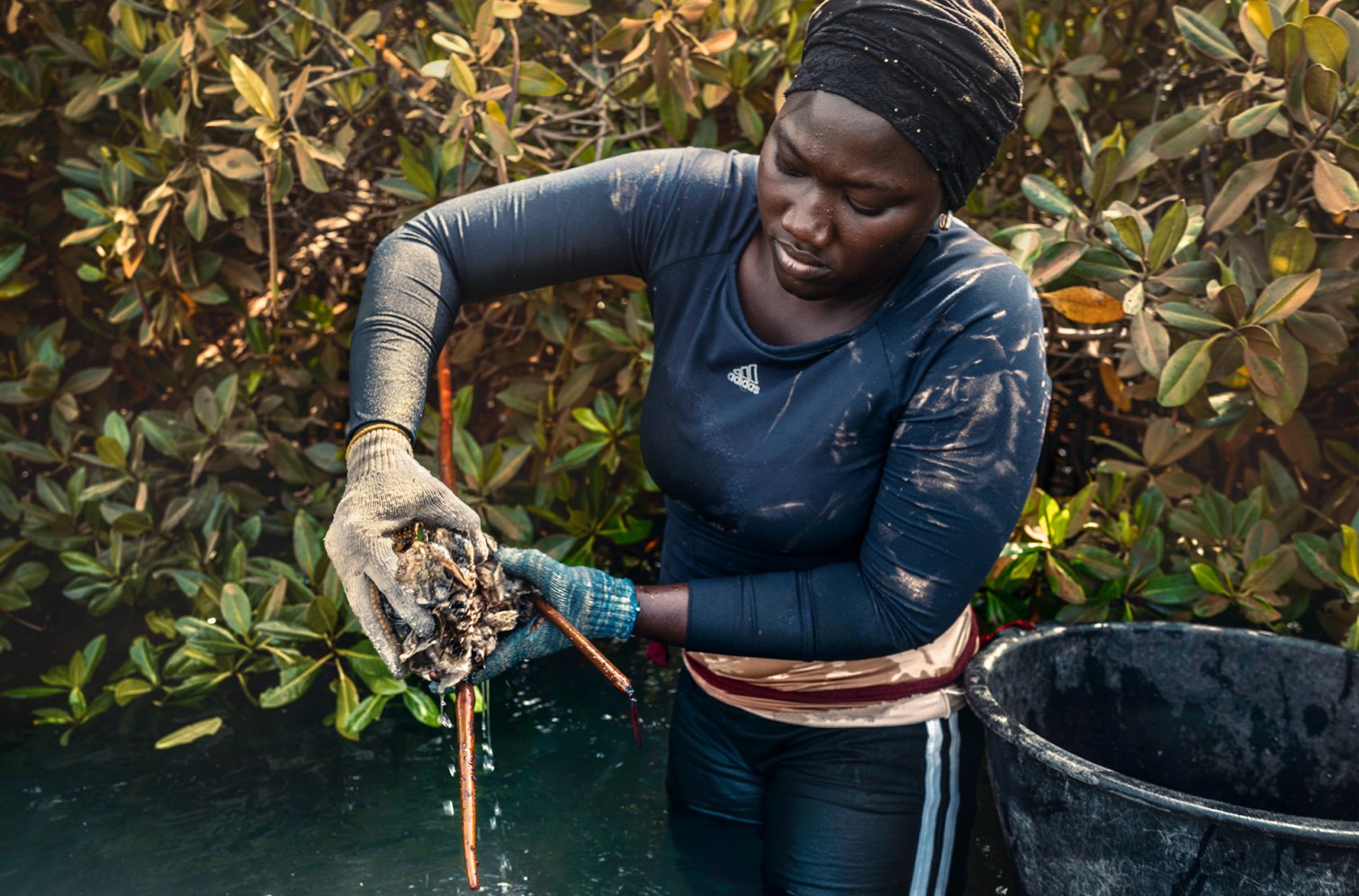MY EARTH IS BEATING: A photo-collection for climate by LuisaViaRoma, a photojournalistic documentation project created by LuisaViaRoma following EXTREME E, the first electric SUV racing circuit designed to raise awareness of the planet on issues of ecological transition.
Coordinated and shot by World Press Photo winner for environmental issues and National Geographic contributor Luca Locatelli, World Press Photo winner in the Portraits category and National Geographic contributor Gabriele Galimberti and journalist, writer and curator Raffaele Panizza, #myEIB is a project that reinforces LuisaViaRoma’s environmental commitment.
Follow the stories and journeys with us. The first photo series is a retelling and sharing of the project and experiences taken place in Senegal in June 2021.
The following adventures will take place as follows:
ALULA, Saudi Arabia- 3/4 April 2021 – Completed
LAC ROSE, Senegal – 29/30 May 2021 – Completed
KANGERLUSSUAQ, Greenland – 28/29 August 2021
SARDINIA, Italy – 23/24 October 2021
T.B.C. – 11/12 December 2021
Senegal
This is why THE MANGROVES ARE THE ANSWER: One of the most concrete ways to combat the damage caused by climate change in an environmentally compatible way.
After the adventure last March in Saudi Arabia, where radical questions were asked and innovative solutions related to issues of desertification and the overcoming of fossil fuels were proposed, THE SECOND MISSION OF MY EARTH IS BEATING #MYEIB, THE PHOTOGRAPHIC DOCUMENTARY PROJECT INITIATED BY LUISAVIAROMA AND LVR SUSTAINABLE WAS BROUGHT TO A CONCLUSION BETWEEN JOAL AND DAKAR following Extreme E, the first electric SUV automobile event organized in the areas of the world which face the greatest environmental risks.
Between the regions of Sine Saloum and Dakar, for ten days we photographed and documented the local inhabitants’ battle to regenerate their land- not only the worrying scenario itself, but the concrete solutions which local NGOs Ecozone, To.org and Oceanium have implemented. “With the vast mangroves that we will plant within the year thanks to support of Extreme E, an immense effort as documented by the correspondents of MY EARTH IS BEATING by LuisaViaRoma, a total of 155 million plants will be reintroduced into the millenary habitat: one of the greatest environmental reconstruction projects ever attempted on the African continent” explains Oceanium’s scientific director Octavio Fleury, who is currently carrying out new projects in the southern area of Casamance.
“The mangrove, underestimated for years, is a real ecosystem, almost a living being we could say, an ecological and anthropological bulwark capable of capturing the CO2 responsible for global warming and sealing it within its own biomass and soil. It also captures microplastics present in the water, preventing them from entering in the food chain to which man is connected. Last but not least, it can also filter the salt from the ocean waters, thus protecting crops which border it” underlines Carlos Duarte, distinguished professor at King Abdullah University of Science and Technology and coordinator of the ecological projects initiated by Extreme E.
Africa, reforestation, plastic, the future… US. This is the second in a long series of crises and stories of environmental defense documented by MY EARTH IS BEATING #myEIB
The Photo Journal from Senegal
The God of Butterflies
Seen from above, the Puits de Sel (salt wells) in Palmarin, in central Senegal, seem like pools created by the god of butterflies.
Due to the disappearance of the mangroves, which counteract the erosion of the coast, this natural spectacle that employs 500 families could disappear, submerged by the sea.
The Hand of Man
Since Hélène and Fary have been breeding bees, which are more of a terror to the local population than hyenas, no one goes into the mangroves of Joal (central Senegal) to chop wood and damage this vital ecosystem.
Beekeeping is proving to be a decisive resource for the protection of the environment and the economy: thanks to the June harvest, 40 kg of bronze-colored honey, born from mangrove flowers, will be sold at the village market.
Carving the Path
A path is carved across the water, and with every two steps, a mangrove’s propagule is planted with bare hands in the delta.
Within a month, before the heavy rains are due, a new leaf will be born.
On May 27, the environmental workers of ONG Oceanium , supported by Extreme E, planted 10 hectares of mangroves among the canals of Mbissel in Central Senegal — part of the largest reforestation projects ever attempted on the continent.
The hand of man, when it does not rip or destroy, knows how to cultivate its future.
The Siege of Djiffer
It’s 1 pm in the village of Djiffer in Central Senegal, home to 5000 inhabitants. The tide is still low and yet, the dock is still not fully visible — submerged with many houses.
A Sea of Plastic
Djiffer beach is completely covered in plastic and abandoned fishing nets: farm animals graze in the waste and feed on it. A small amount is carried away by the tide but a large proportion remains due to the chronic lack of rubbish collection and recycling infrastructures— it was only a few days ago that a small truck began commuting between the village and the city of Palmarin, collecting only a small amount of waste. Among the many capabilities of mangroves, with their dense aerial roots, is also that of blocking the microplastics that float in the water and preventing them from reaching the coasts and entering the food chain.
The battle of the sea
Due to the deforestation of the mangrove, many fish have lost their protective habitat and have had their resources extensively plundered, which, over decades, has caused the fish to gradually shrink in size. The 28 thousand pirogues engaged in artisanal fishing in Senegal use very fine nets which prevent the smaller specimens from freeing themselves and continue growing. The 156 industrial fishing boats in the hands of powers such as China and France use immense trawl nets and then discard the dying, commercially worthless species into the sea.
The traces of survival
Created in 2001 between the canals and the brackish areas of the Saloum River delta, the Réserve Naturelle Communautaire de Palmarin is a biosphere of almost one hundred square kilometers and home to one of the last colonies of Senegal’s hyenas. This specimen, intrigued by the drone that immortalizes it, traces back and forth among the mangroves that were replanted two years ago by the NGO Oceanium. The mangrove provides them with shelter in the sunny hours of the day. In addition to nuroushing them — with small mammals becoming scarcer —these predators have adapted to feeding on crabs, and even mollusks, which grow among the branches.
The future in hand
Eihadj Wade is 16 years old and has found a new job: picking the mangrove’s propagules. These “seeds”, as long as paint brushes and heavier at the base, are picked before their natural falling time and are sold for 1000 Senegalese franks per bag to the NGO Oceanium, which will in turn plant them where necessary. Each bag weighs 50 kilograms. And each contains fifteen-hundred seeds. In nature, propagules fall from the branches and plant themselves in the ground, with a 1% success rate: this is why humans need to intervene in order to accelerate the re-forestation process. Other propagules, after falling in the canal, get dragged by the current and, in a sweet and perfect motion, eventually plant themselves in the fiddler crabs’ burrows spotted around the salty areas.
With strength and respect
For years, Joal’s oyster pickers went through the mangroves to gather the precious shellfish. But they did it without considering the environment: branches were cut, the oysters collected, and the wood used to make charcoal. Now, thanks to attentive re-education, the ecosystem is preserved and the oysters are hand-picked. Ndeye Farmadiakhaté, 27 years old, has been doing this job since she was 7 and sells her crops to MboogaYaay — a local association which, thanks to its revenues, also acts as a small informal bank to lend money to the women of the village. Yokhoos is the word for oyster, in Wolof language.
Credits:
Coordinated and shot by World Press Photo winner and National Geographic contributor Luca Locatelli.
Shot by World Press Photo winner and National Geographic contributor Gabriele Galimberti.
Coordinated and narrated by the journalist, writer and curator Raffaele Panizza.

